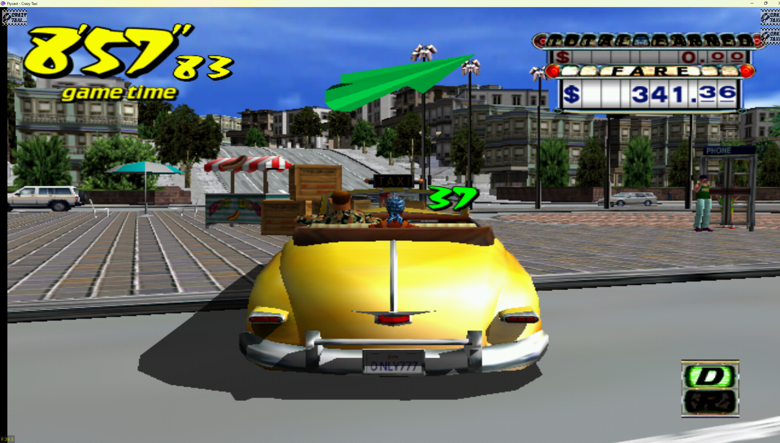The Internet of Things is a term becoming familiar to people worldwide. Due to rapid technological advancement, your life is becoming more connected than ever. From wearable devices to smart homes, IoT is a network of objects and devices communicating and sharing information with others over the Internet.
Everyday objects like appliances, cars, and even clothing are embedded with software, sensors, and other technologies, allowing them to collect and share data. The IoT has a vast impact on your life. It can improve productivity, convenience, and efficiency.
You can control your home, monitor your fitness and health, and streamline industrial processes remotely. The extensive connectivity and data sharing do raise concerns about security and privacy. It is essential to know the benefits and challenges involved.
What is a simple explanation of the Internet of Things?
You interact, depend on, and benefit from IoT devices whether or not you realize it. The IoT describes adding Internet capabilities to an IoT device, an IoT system, or a process. It is a generation of technology that requires professionals like TechAhead, who specialize in developing and applying new techniques.
The Internet of Things is a physical objects network embedded with sensors, software, electronics, and network connectivity, allowing the objects to collect and exchange information. It will enable remote control across IoT networks, which creates opportunities for integration between computer-based systems and the physical world.
The results are improved economic benefits, accuracy, and efficiency. Each IoT device is uniquely identified and can operate independently within the Internet infrastructure through its embedded computing system. By the end of 2023, there will be 13.1 billion devices connected to the IoT network. The number of devices connected to the IoT by 2030 is estimated to be 29.4 billion.
The IoT is Revolutionary
IoT devices change how you carry out simple tasks and make your life convenient. IoT includes mobile devices. It is possible to manage activities that were previously inaccessible. You control devices around you with the touch of your smartphone screen.
You can use it as a management tool and to observe data. You can make business decisions remotely by accessing data fed into applications and stored there. Using IoT devices decimates costs for businesses. There is minimal expense associated with the IoT. Among the best benefits is the money aspect.
Information is a critical driver in the Internet of Things. Your organization gathers and stores information from many sources in your cloud network. The future is limitless. It provides solutions in schooling, medical services, style, etc.
Connecting smart objects and adding sensors add a level of digital intelligence to devices that would otherwise be unable to communicate without human intervention. IoT technologies make the fabric of the world around you smarter and more responsive.
It merges the digital and physical worlds. Nearly any object can be transformed into a device connected to the Internet capable of communicating information or being controlled. The Internet revolution streamlined multiple processes and spread accessible communication, laying the foundation for an enormous data storage and knowledge source. Breaking down barriers between machine and user and machine-to-machine communication is a step forward. It will drive socio-economic growth and technological development.
The Size of the IoT
There are more connected devices in the IoT than people in the world. The vision of IoT is to connect everything from everyday objects to industrial equipment. It includes living organisms like people, farm animals, and plants.
Because of its constant growth, the size of the IoT is challenging to determine. In 2022, the global IoT market was valued at $544.38 billion. It is projected to reach $622.21 billion this year and over three trillion dollars by 2030.
With increasing urbanization and population, many countries are adopting smart city solutions and initiating smart city projects. The rise in smart buildings and homes, smart infrastructure, and smart manufacturing projects is expected to create a massive business transformation, accelerating the IoT’s growth.
Increased application connectivity and data server demands will cause the highest compound annual growth rate. Currently, North America accounts for the lion’s share of the market. Europe is just a little behind and may dominate the market soon.
How Does the Internet of Things Work?
Several systems make up the ecosystem of the IoT. Each component is essential in collecting, communicating, and processing data.
The layers are:
- Endpoints
- Applications
- Connectivity
Endpoints are the nodes capturing data, collecting data, and transmitting data encryption from the environment or user. The modes include near-field communication devices, cameras, beacons, or sensors.
Input comes from the pressure of gas that moves through a pipe, a power plant’s electromagnetic signature, or an athlete’s heart rate. Endpoints enable edge computing where some data processing occurs at the endpoints and does not require sending to the cloud first.
Sometimes the endpoint nodes function as routers in a network. The embedded firmware on them allows sharing of data with other network nodes. Like a smart device, the data is passed back quickly to a client. Being able to process data where it is collected provides benefits that include:
- Enhanced bandwidth availability
- Increased security systems
- Reduced cost savings
- Immediate insights
- Faster feedback and responsiveness
An application is a combination of cloud services and software consuming and analyzing data using methods like AI and machine learning to make sense of data encryption and provide outputs or insights to the system or user. It usually has a graphical user interface that enables users to easily interact with the devices and data collected in the system.
Various channels can send data to the cloud depending on the IoT system scale, environment, and use case. They include;
- Networks, such as MAN, LPWAN, WAN
- Satellite networks
- LTE
- Mesh networks
- Bluetooth low energy consumption
- LiFi
- Wi-Fi
The number of households integrating smart home networks is increasing. GfK and eMarketer conducted analytics that showed 29.5 million households had smart home IoT devices in 2018. By 2022, the number of households rose to 57.4 million. The prediction for this year is 60.4 million households.
A smart home has internet-connected devices you control with a smartphone or tablet. Smart devices include robot vacuums, air conditioning, smart thermostats, and smart TVs connected to wireless sensor networks through a system, such as NFC, Bluetooth, Wi-Fi, and Zigbee or hardwired. TechAhead uses IoT to control and monitor mechanical and electrical systems in your home.
Smart devices communicate and share information. The devices perform automated and scheduled tasks. IoT devices use sensors that bounce to and from each other to learn and process your patterns and automatically adjust to your comfort level. Other devices include voice-activated sound systems, burglar alarms, and light sensors.
What is the impact of IoT on our lives?
IoT is reinventing automobiles by enabling connected devices. Owners operate connected cars remotely. You can preheat the car before getting in or remotely summon your car by phone. Device-to-device data allow connected cars to book service appointments.
In the past, car manufacturers had either an arms-length relationship with a buyer or none. Automobile dealers and makers now have a continuous relationship with customers. Rather than selling cars, they charge usage fees that offer ‘transportation-as-a-service’ with autonomous vehicles.
Manufacturers can upgrade cars with new software. The difference from traditional car ownership is that a vehicle no longer depreciates in value or performance. Manufacturers add sensors to product components to transmit data about their performance.
It helps companies spot components likely to fail and replace them before they cause damage. The business models can use generated data to make supply chains and systems more efficient because of the accuracy of the data generated.
Production systems become more responsive with real-time data generated, collected, and analyzed. IoT devices impact every aspect of business models. It changes the devices connected to your company’s systems that produce new data types.
The IoT helps gain a competitive advantage, increase customer satisfaction, improve efficiency, harness intelligence, and improve operations. IoT has a profound impact on your work and personal life. It improves healthcare, transportation, and public safety with timeliness and better information.
There are many ways that IoT devices impact business models and society. Three significant benefits are cost, efficiency, and visibility. IoT devices allow machine learning that takes over tedious tasks, making your life more comfortable, productive, and healthy.
Connected devices could change your daily routine. When you turn off your alarm clock, the coffee machine can be turned on, and your window blinds can open. Your refrigerator can order groceries for home delivery when items are depleted. A smart oven can provide menu suggestions and cook pre-assembled ingredients by mealtime. Use your smartphone to schedule meetings. A connected car GPS tells you when you need to refuel.
Examples of IoT Applications
The impact of the Internet of Things is felt across industries such as agriculture, healthcare, manufacturing, retail, and transportation. IoT applications monitor parameters like machine performance, energy consumption, air quality, humidity, and temperature. Data is analyzed in real-time to help identify anomalies, trends, and patterns that help your business models optimize operations and improve your bottom line.
Agriculture
IoT applications monitor crop growth, weather patterns, and soil conditions. Sensors measure the soil’s moisture content to ensure optimal irrigation of crops. IoT device management includes monitoring livestock health, managing supply chains, and tracking equipment. Solar-powered or low-powered devices can be used in remote locations with minimal oversight.
Healthcare
Internet of Things devices monitor patients remotely and collect real-time data on vital signs like oxygen saturation, blood pressure, and heart rate. Analyze sensor data, detect patterns, and identify possible issues before becoming serious. The devices also monitor medication compliance, inventory management, and track medical equipment.
Manufacturing
Industrial IoT applications optimize production processes, detect equipment failure, and monitor machine learning performance. Sensors monitor the humidity and temperature in a manufacturing environment to ensure optimal conditions for sensitive product production. Industrial IoT monitors the quality of finished products, manages supply chains, and tracks inventory.
Retail
IoT applications in the retail industry optimize store layouts, monitor inventory levels, and track customer behavior, which allows retailers to improve the customer experience and optimize product placement. They also track shipments and monitor supply chains.
Transportation
The Internet of Things tracks shipments, optimizes routes, and monitors vehicle performance in the transportation industry. Sensors that monitor fuel efficiency reduce fuel costs and improve sustainability. IoT devices can monitor cargo conditions to ensure it arrives in optimum condition.
How do IoT things make our lives better?
IoT applications are among the most essential 21st-century technologies. Now that you can connect objects like baby monitors, thermostats, cars, electronic devices, and kitchen appliances to the Internet with embedded devices, seamless communication occurs between things, processes, and people.
In this hyperconnected world, digital IoT systems record, monitor, and adjust the interaction between connected things. Cloud-based IoT systems enhance financial services, human resources, customer service, and supply chain management processes. With the emergence of allied and cloud-based technologies like machine learning and analytics, industries achieve a new layer of IoT solutions that creates\ new business models and revenue streams.
Common Uses for Smart Devices
- Connected assets
- Connected logistics
- Preventative and predictive maintenance
- Smart cities
- Smart digital supply chains
- Smart Manufacturing
- Smart power grids
IoT Devices Making Lives Better
IoT wearable devices enable you to understand your health better and allow healthcare professionals to monitor you remotely. The technology enables companies to track the safety and health of employees, which is useful for those working in hazardous environments.
IoT devices encourage you to rethink business approaches and provide tools to improve business strategies. Benefits for businesses include:
- Enhancing employee productivity
- Generating more revenue
- Improving customer experience
- Making better business decisions
- Monitoring business processes
- Saving time and money
Benefits of IoT Sensors
Items with IoT sensors range from utility meters to automobiles to gas turbines. Physical devices have one or more sensors. Each monitors something specific. IoT sensors present awareness of other processes, systems, and devices to achieve a more automated and coordinated control architecture.
Sensors detect environmental changes like pressure, motion, humidity, or temperature. Along with actuators that cause physical changes, sensors are the heart of IoT technology. Sensors and actuators make resolving issues without human intervention possible.
IoT Data Management
IoT devices contain sensors that collect data. The data is transmitted by 4G, 5G, Wi-Fi, or other means. The International Data Corporation calculates IoT devices will create 79.4 zettabytes of data within five years.
Some data management provides quick updates from temperature meter readings or a sensor. Others may create vast data traffic, such as computer vision video surveillance. Drones will also drive data created with camera use. Self-driving cars will generate rich sensor data, including video, audio, and specialized automotive sensor data.
The Internet of Things generates huge amounts of data from environment sensors, sensors attached to machines, or the words shouted at your smart speaker. It allows companies to create data sets and use big data analytics to examine them.
Manufacturers are presented with data about how components behave that help make improvements quickly. IoT data comes in many forms, like temperature, video, voice recognition, and other sensor readings. All are mined for insight.
IoT Security
IoT devices have created vulnerabilities for companies. The number of connected objects that can be attacked mushrooms as more objects become connected. Before IoT, large corporate networks had 50,000 to 500,000 endpoints vulnerable to attack. Now, there are millions of endpoints involved in a network. There will likely be a billion IoT devices in the future. Promoting cybersecurity is crucial.
Consumer IoT devices cause concern about customer privacy. IoT cybersecurity is also concerned with protecting critical equipment like pacemakers and manufacturing plants that would impact a customer’s health or a company’s productivity if attacked. Recommendations to help tackle IoT security include:
- Understanding what IoT security means to your business model and industry
- Setting clear responsibilities and roles for IoT in the supply chain
- Holding strategic conversations and collaborating with regulators and other industry players
- Viewing cybersecurity as a priority for the life cycle of a product and developing skills to achieve it
- Rigorously transforming skills and mindsets
- Creating an external security researchers’ point-of-contact and implementing a post-breach plan
TechAhead uses the latest security regulations, compliance, and practices to keep your information confidential and safe.
TechAhead’s IoT Services
TechAhead has been in business since 2009. They are an industry-recognized company ranking among the top IoT companies. Services the offer include:
- IoT applications development
- Equipment tracking app
- IoT integration
- Smart homes solutions
- IoT wearables connectivity
- IoT platform
IoT platform integration creates and manages apps to run analytics and store and secure your data. They make life less expensive and easier for users, managers, and developers, similar to the operating system of a laptop.
The platforms handle issues such as extracting and connecting data from many endpoints in troublesome locations with spotty connectivity. TechAhead understands your company’s IoT strategy. They are experts in the application environment, data management, security, and edge processing and control.
Featured Image Credit: Photo by Anna Shvet; Pexels; Thank you!


















